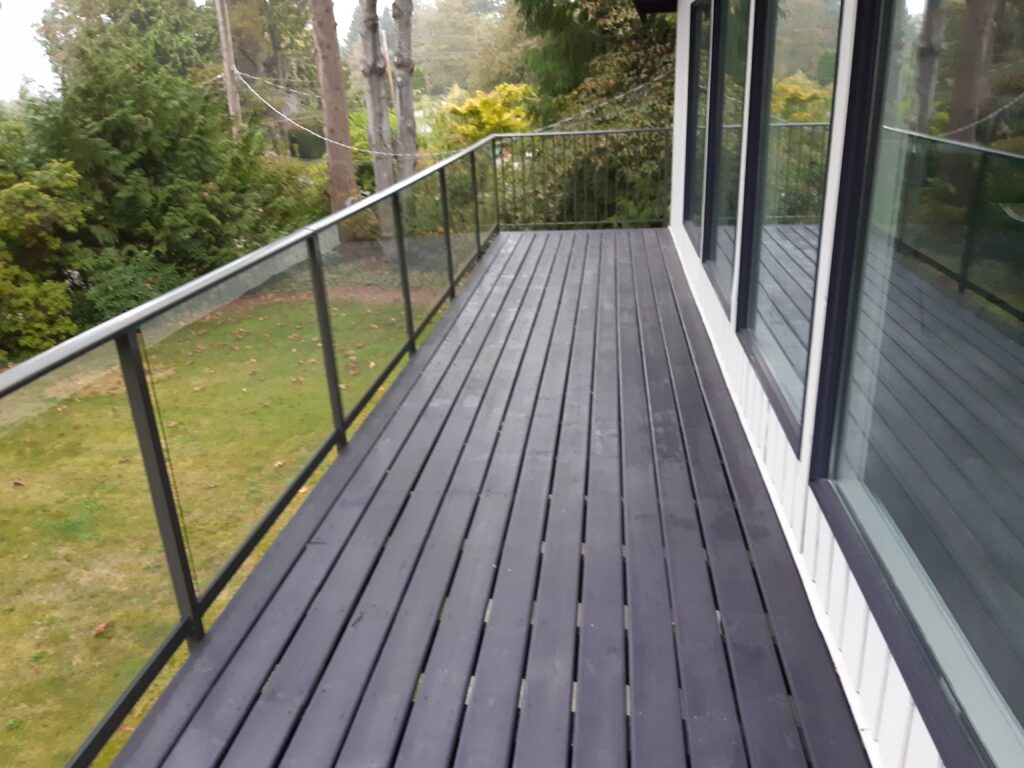Abstract: Sunshine Coast Home Inspector notes on glass panels used as deck guardrails. Perfect for unobstructed views but be sure they are approved for fall protection.
Photo: Glass panels are frequently used on decks. Check for the glass watermark to determine if they are approved for the application.
Many a time when the homeowner has a great view property, then monolithic glass baluster guards are used, in place of individual vertical metal or wood spindles. In particular, older homes on the Sunshine Coast or owner-built cabins and cottages as found on nearby Keats and Gambier Islands, are more likely to have suspect glass panels, as some of these properties have been built with a more ‘relaxed’ approach to building materials. In this post we describe three types of glass that have been used for this purpose, not all correctly.
- Plate Glass: Not approved. Better known as window or float glass should never be used as it is not designed to have strength to resist a lateral force when someone pushes against it. When it breaks, there are large sharp pieces that can cut.
- Tempered Glass: Approved. It is heat-treated to improve its strength by at least four times. When it breaks, it falls apart into small crumbly pieces. Automotive side or rear window glass are made of this.
- Laminated Glass: Approved. Two glass panels are joined together with a plastic layer in-between. When the glass breaks, the shards remains in-place because they are held by the ‘sticky’ plastic film. Automotive windshields are made of this.
Both tempered and laminated glass used for decks are manufactured to standards. For example, current requirements for tempered glass are a minimum ¼ inch thickness with a safety factor of four.
As one of the items checked during a home inspection, our inspection will identify if the glass panels used for fall protection are approved for that application.

